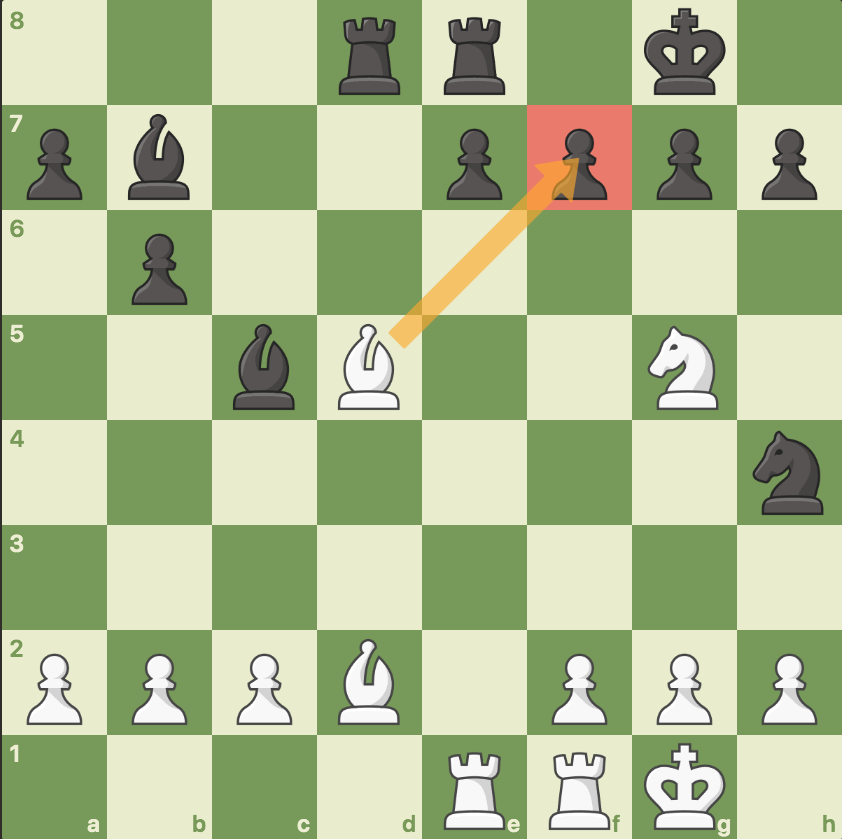Simplified Chess Notation
Each square is identified by its file and rank.
The files are the letters a-h and the ranks are the numbers 1-8.
King = K Queen = Q
Rook = R Bishop = B
Knight = N Pawn = no abbreviation
Use the ending square to represent the move.
For example, if a knight moves to square f3, write "Nf3".
If two pieces of the same type can move to the same square, you should include the starting Rank or File to clarify which piece is moving.
For example, if a knight on g1 moves to f3 while another knight on d2 can also move to f3, write "Ngf3" to specify that the knight on “g1” is moving.
(Hence the “g” after the “N”)
If a piece captures an opponent's piece, use the "x" symbol between the piece being moved and the square it is moving to.
For example, if a rook on d1 captures a pawn on d6, write "Rxd6".
If a pawn is promoting, use the equal sign followed by the promoted piece.
For example, if a pawn on h7 promotes to a queen on h8, write "h8=Q".
If a move results in check, add a plus sign (+) after the move.
For example, if a bishop on d5checks the king on f7, write "Bf7+".
If the move results in checkmate, add a hashtag symbol (#) instead of a plus sign.
For example, if a queen on a5 delivers checkmate to the opponent's king on e1, write "Qa5#".








